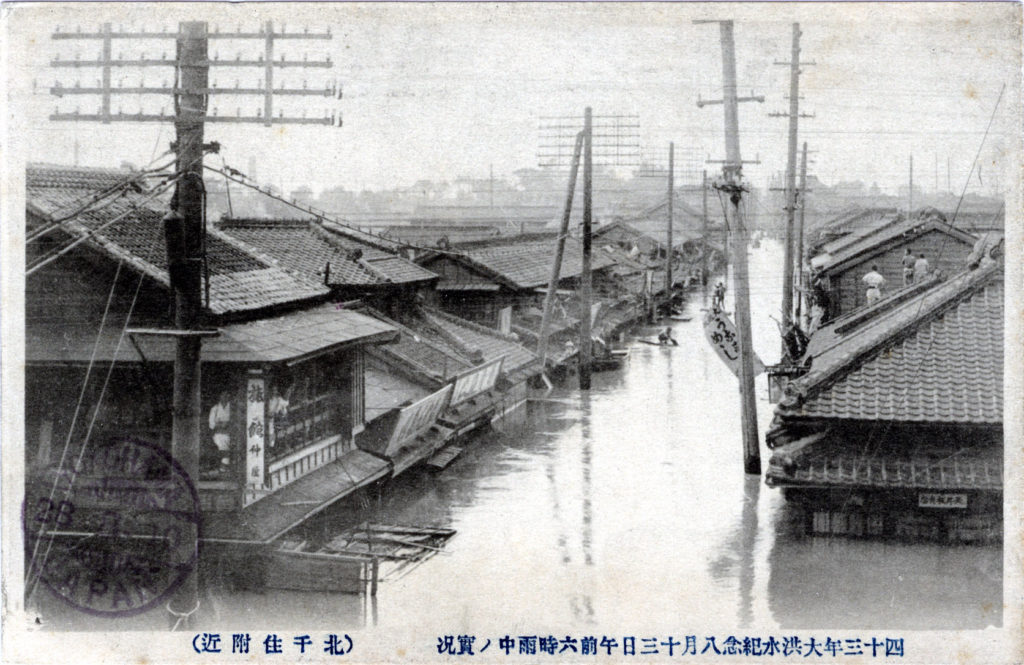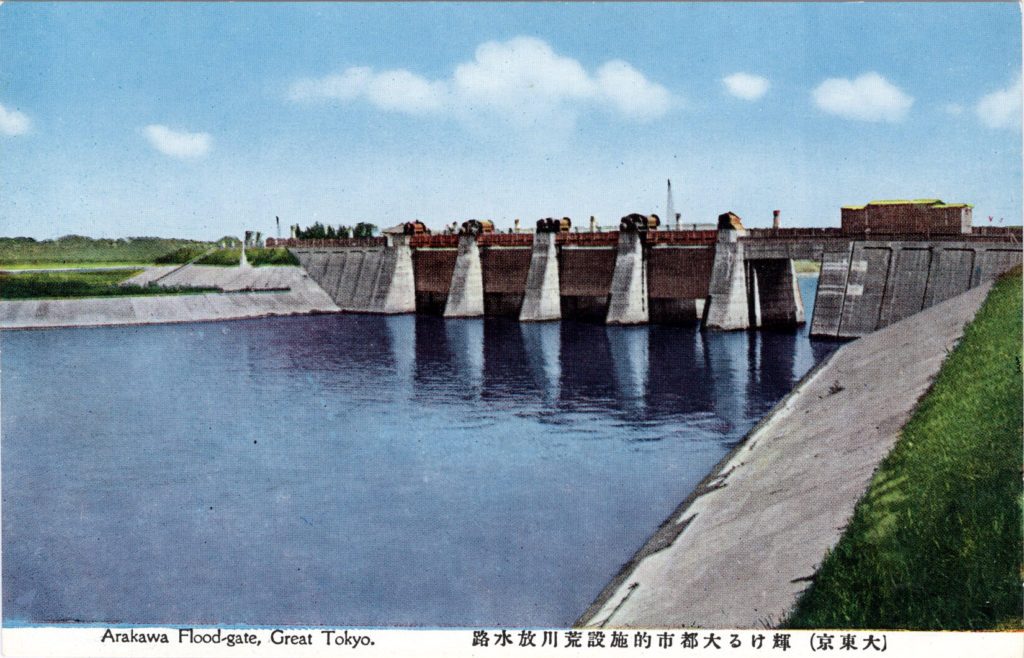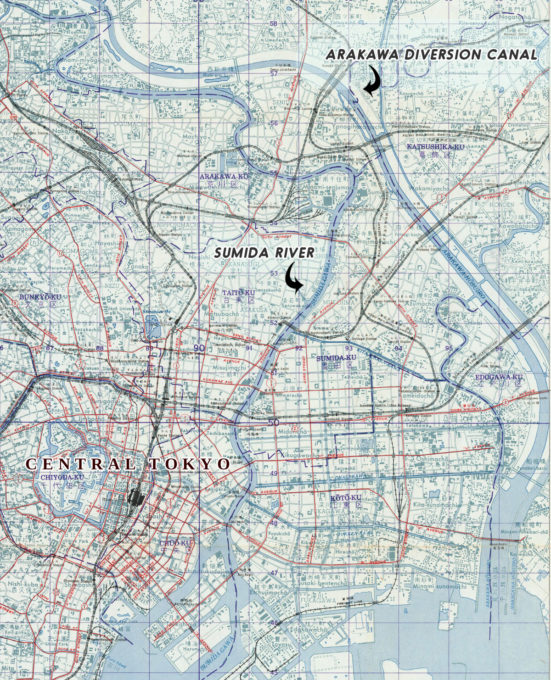“The great flood of late Meiji [1910] was the last to devastate the center of [Tokyo] … The Arakawa Drainage Channel was begun after the great flood and finished on the eve of the earthquake [1923]. Even before its completion, it worked well, controlling the torrential rains of 1918.
Map: Arakawa Diversion Canal & Sumida River, ca. 1950. [Source: David Rumsey Historical Maps Collection]
“… The channel was the most ambitious engineering project the city had seen since the shogunate filled the marshy mouths of the Sumida to make the Low City (Shitamachi). The money came from the national government, and the Home Ministry directly supervised operations, digging a wide new concourse for upwards of fifty miles, from deep in Saitama prefecture to the bay.
“… The endeavor showed great vision, and the results were splendid. The floors of a few houses may sometimes even now be under water from a cloudburst, but no major flood has been caused by the Sumida since 1910.”
– Tokyo from Edo to Showa 1867-1989: The Emergence of the World’s Greatest City, by Edward Seidensticker, 2011

Sumida River flooding, 1910. It was this major flood that motivated the government to construct the Arakawa Drainage Channel.
“The lower portion of the Arakawa River floodplain, which includes Saitama Prefecture, was developed as farmland to supply rice to Tokyo in the seventeenth century.
“… The Arakawa forks at Iwabuchi. One of the channels, the Sumida, was the original waterway of the Arakawa until 1928. The other channel (a floodway) was excavated over a period of seventeen years, beginning in 1911, to drain floodwater directly from the upper stream to the sea.
“When flooding occurs in the upper drainage, the water does not flow along the Sumida, but is diverted to the floodway. This floodway has successfully drained the floodwaters, and no floodwater has overflowed its embankments.”
– Japan in the 21st Century: Environment, Economy, and Society, by Pradyumna Karan, 2010



